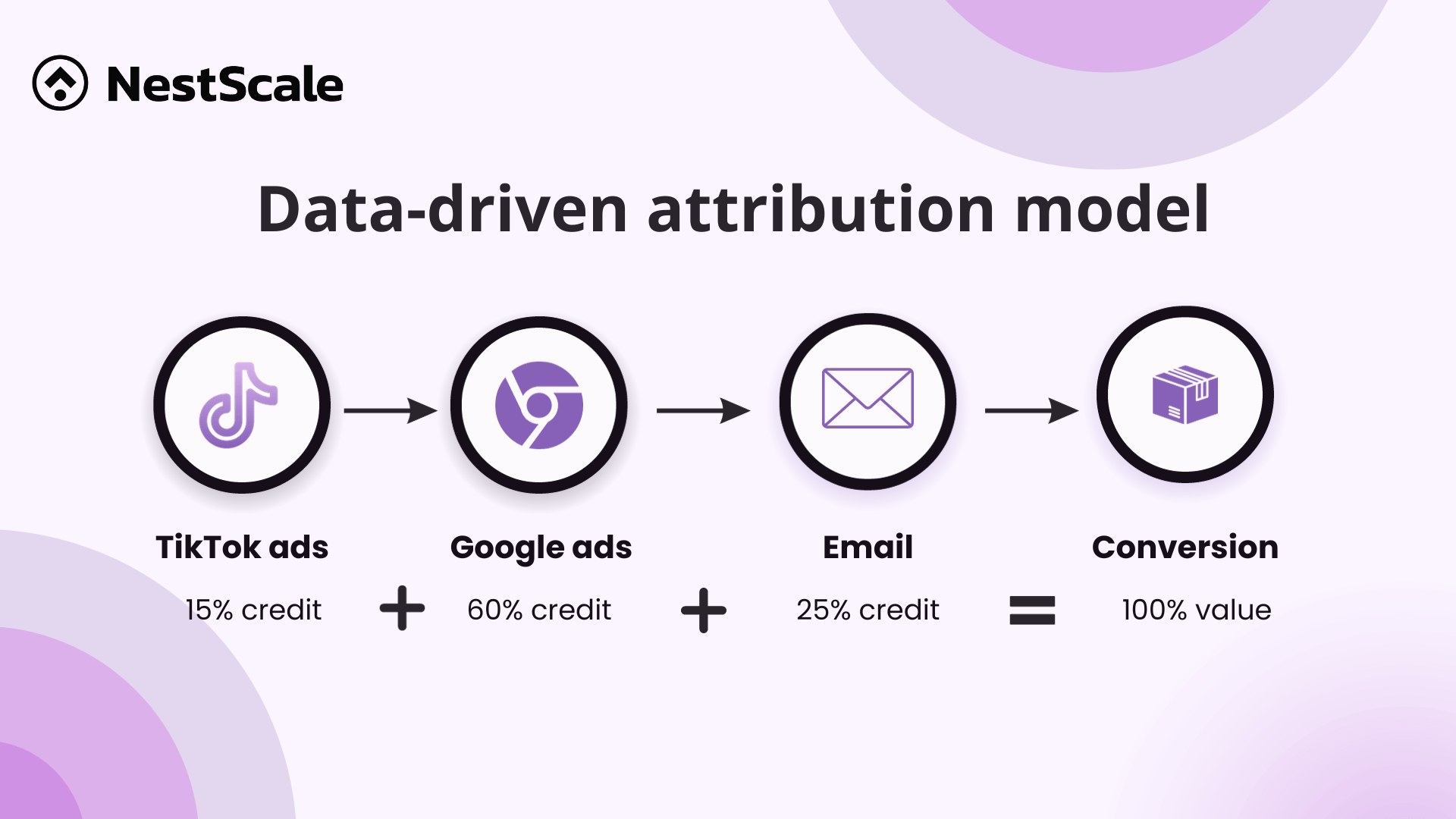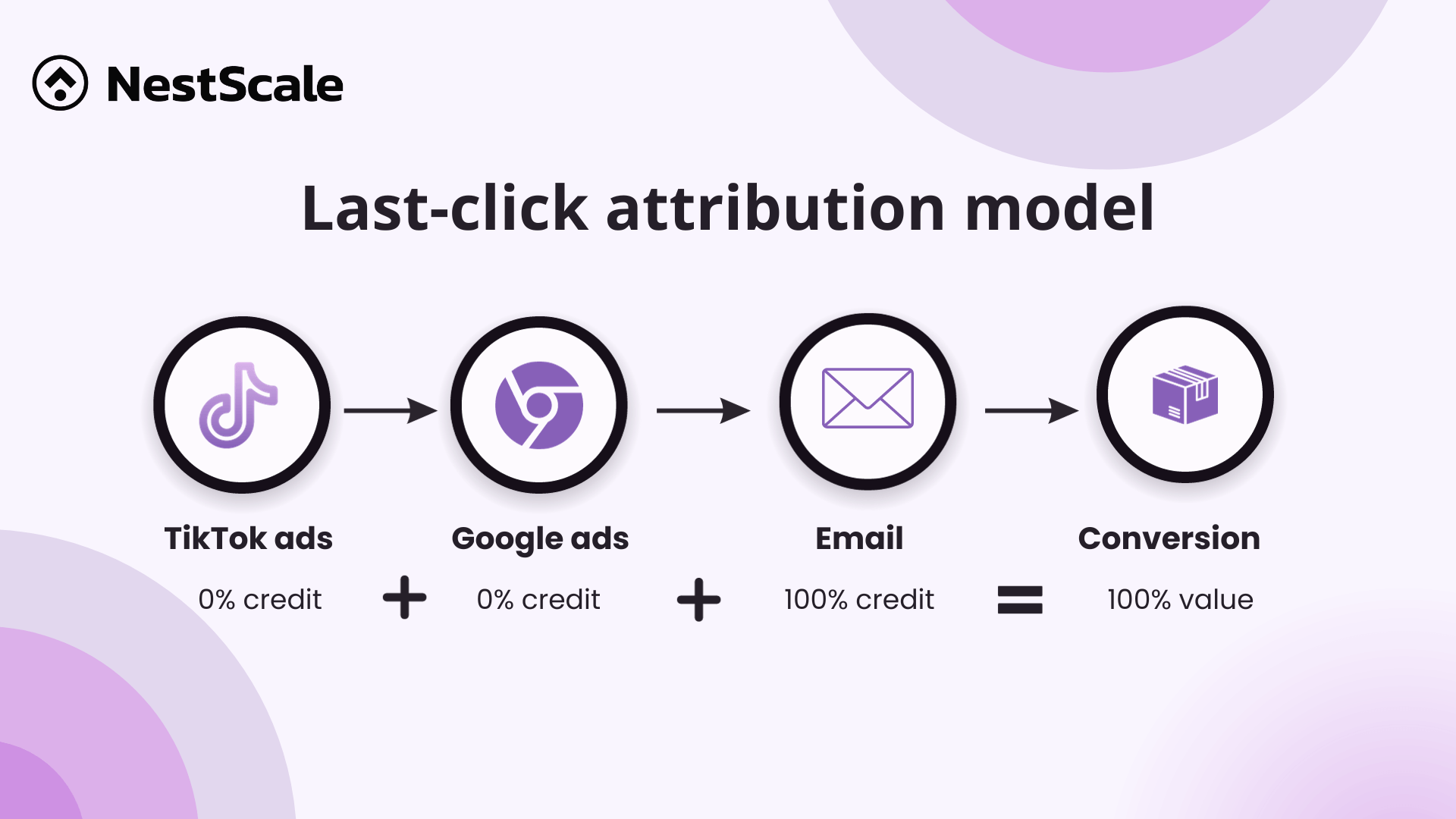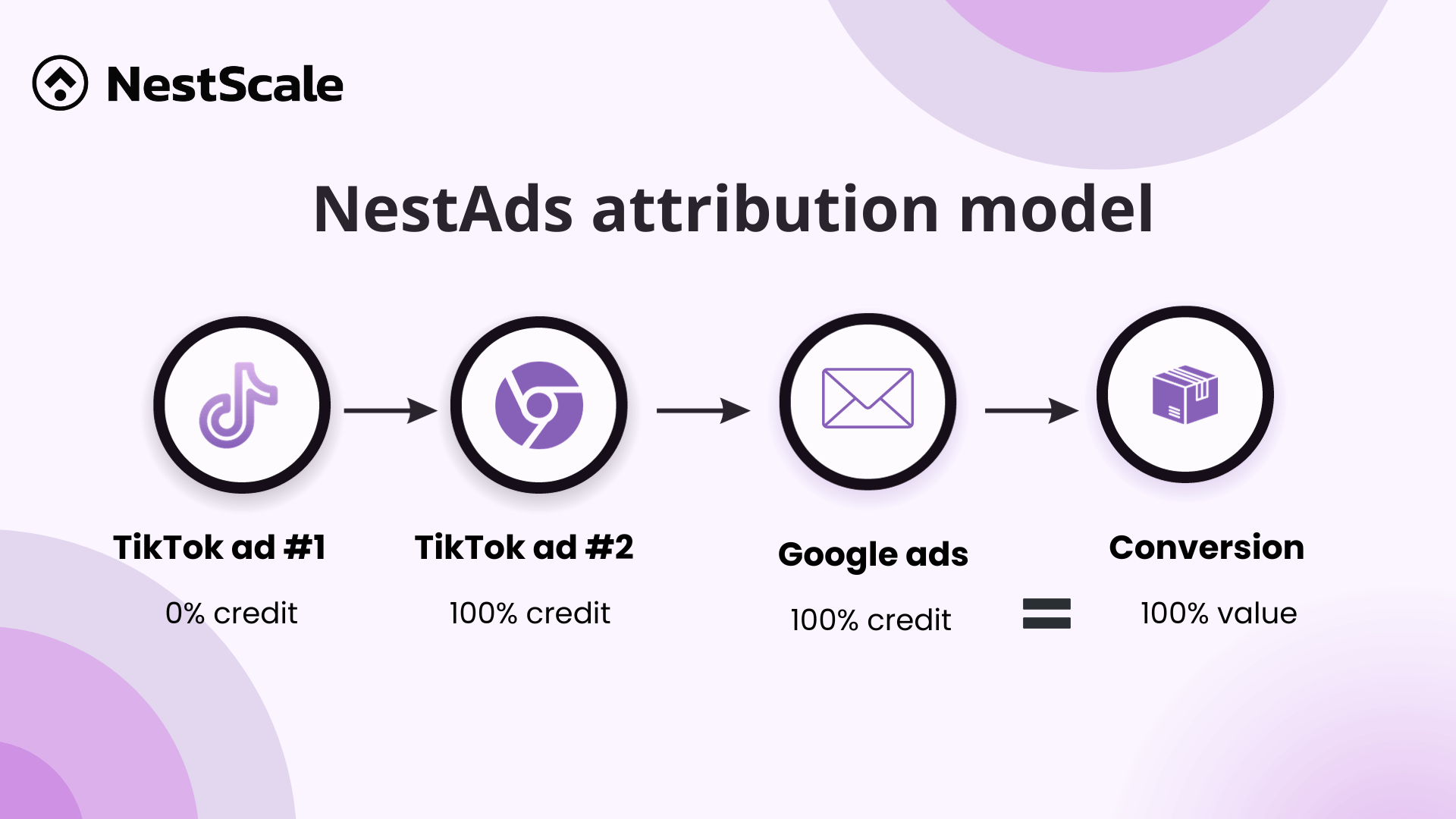In today’s fast-paced digital landscape, marketing isn’t just about firing off campaigns in one channel and hoping for the best. It’s a wild, multi-stop journey with potential customers darting through various touchpoints. And you cannot track all of these manually. You need a method that can assist you. This is where the digital marketing attribution model steps in the game and helps you with it.
In this blog, we’re going to walk you through everything you need to know about marketing attribution and the different attribution models advertisers can use. We’ll also give you some tips on picking the best attribution model for your business. So, grab a comfy spot and join us as we dive into our topic for today!
What is marketing attribution?
Marketing attribution is basically the process of giving credit to the marketing efforts that lead to sales, helping you determine which channels are most effective and what return on investment you get from each channel. This analysis identifies the touchpoints responsible for sales or conversions, such as organic search, display ads, or email campaigns.
The ways the attribution gives credit to each channel will depend on the framework that you use. That framework is the so-called: Marketing attribution model. Various models provide different insights into which channels are contributing the most to your store’s sales.
For example, let’s say a customer purchases from your store. With the help of marketing attribution, you can track the channels they interacted with during their decision journey. Depending on the attribution model you use, the credit for the sale can be assigned solely to the first channel, the last channel, or evenly split among all three channels.
Why is marketing attribution important?
Many businesses are now trying to use marketing attribution in their analysis to boost marketing efficiency. This method is especially valuable in the world of multi-channel advertising today. Especially when you select the right attribution model, you can gain valuable insights to supercharge your advertising campaigns. Let’s explore some of the benefits it offers:
Save your spending on marketing activities
Marketing attribution provides valuable insights into the effectiveness of different marketing touchpoints, helping you allocate your marketing budget more efficiently. By identifying which touchpoints generate the most engagement and conversions, your marketing teams can reallocate resources to focus on the most impactful channels and strategies.
This optimization of marketing spend ensures that resources are directed where they will have the greatest impact, maximizing the overall effectiveness of marketing campaigns.
Improve campaign effectiveness
Attribution provides crucial insights into the effectiveness of marketing efforts, especially for advertising at different stages of the customer journey. These insights allow you to target the right audience with the right message at the right time, leading to higher conversion rates. This, in turn, boosts the return on investment (ROI) for your campaigns.

Customize the experience of customers on their journey
We all know that businesses can enhance the customer experience and build stronger connections, increasing the likelihood of conversion by tailoring messages and content to match the preferences of customers. And guess where that information comes from? Yes, you have the data right from the customer’s unique interaction history. When customers receive content that resonates with their prior interactions, it naturally sparks their interest and encourages them to engage with your brand.
Measure the long-term impact
By using the right attribution models, you can look at the whole customer journey, even if it takes a long time for someone to buy something. This helps your business understand all the different interactions that influence a customer’s decision, starting from when they first learn about a product to when they make a purchase. When you see how each interaction matters in the customer’s journey, you can make better decisions.
Types of marketing attribution models
The attribution model has lots of variety that businesses can use flexibly for their purposes. In the next sections, we’re going to introduce to you 7 most common most common and easy-to-use models for tracking your marketing campaigns. Basically, they’re divided into 2 big categories: Single-touch and Multi-touch marketing attribution models.
Single-touch marketing attribution models
Single-touch models do just what they sound like—they give all the credit to one interaction in the customer’s journey. Advertisers mainly use three attribution models in this segment: First-click, Last-click, and Last non-direct click.
1. First-click attribution model
Firstly, we’ll talk about the First-click attribution model. Using this model, you’re assuming that the first impression is what counts the most and give all the credit to the very first marketing channel that a customer bumped into. This model is extremely handy when you want to know which advertising campaigns are capturing new customers’ interest and test out new marketing channels.
For example, you’re a new e-commerce store that sells shoes. You have a new shoe model and want to let everybody know that it’s available within your store. So, you run ad campaigns to increase the awareness of the customers and reach out to as many people online as you can. When using First-click attribution model, you find that most impressions are coming from TikTok ads. Therefore, in this phase, you shift your focus more to TikTok ads to achieve this marketing goal.

| Advantages | Disadvantages |
| – Easy to apply into practice – Useful for businesses that are focused on brand awareness or lead generation | – Ignores the influence of other touchpoints on the conversion – Doesn’t account for the complexity of the customer journey |
2. Last-click attribution model
In contrast to the First-click attribution model, the Last-click model allocates 100% of the credit to the last marketing touchpoint. Even if your customers interact with multiple channels, it considers only the last thing they clicked on or saw. This model can be really handy when you only want to focus on the conversion, or you just want to simplify your data.
Imagine this: You’re running a discount for your gaming mice, and you decide to promote it by using TikTok ads, Google ads, and email marketing. Your goal is to increase the sales volume as much as you can during this discounting, and hence, your main focus is conversion. In this case, you should use the Last-click model, as you can highlight the advertising channels that have the most responsibility for converting your potential customers.
| Advantages | Disadvantages |
| – Easy to apply into practice – Useful for businesses that are focused on driving conversions | – Ignores the influence of other touchpoints on the conversation – Doesn’t account for the length and complexity of the customer journey |
3. The Last non-direct click attribution model
The Last non-direct click attribution is really easy to understand, as the name itself says everything. This model gives credit to the last thing a customer saw before they bought from your store through a direct click. You can use this attribution when you want to focus on the channels that probably leave a strong enough brand impression that customers can search for your name right away.
For example, a business uses this model to track the effectiveness of its digital marketing effort. The business finds that email is the Last non-direct interaction before customers make a purchase. So, by using this attribution model, 100% credit will be given to email, as this is most likely to have a direct impact on customers’ impressions before their purchase.
| Advantages | Disadvantages |
| – Track the effectiveness of marketing campaigns at the end of the customer journey – Have a chance to which marketing channel leave a strong impression that customers can remember your store’s name | – Track the effectiveness of marketing campaigns at the end of the customer journey – Have a chance to which marketing channel leaves a strong impression that customers can remember your store’s name |
Multi-touch marketing attribution models
The goal of Multi-touch attribution is to credit each customer interaction properly according to its importance in the buying process. This type of attribution has gained more attention lately because it values every step in the customer journey fairly. In this category, you’ll find four popular attribution models: Linear, Position-based, Time decay, and Data-driven.
4. Linear attribution model
The Linear attribution model is quite straightforward. It distributes equal credit to every step a customer takes before making a purchase. It doesn’t pinpoint which step had the most impact, making it a great starting point if you’re unsure which step matters most in the buying journey. However, it’s important to periodically reevaluate the impact of each marketing channel over time.
| Advantages | Disadvantages |
| – Easy to use and apply into practice – Suitable for businesses who are unsure of which step matters most – Provide insights into the overall effectiveness of your marketing campaigns | – Doesn’t take into account the varying levels of impact that different touchpoints can have – Doesn’t account for the timing or sequence of touchpoints |
5. Position-based attribution model
The Position-based attribution model (or U-shaped model) gives most credit to the first and last customer clicks, while everything in between shares the credit equally. This model works well if you really value the credit of the first and last touchpoints in the customer journey. However, you also want to account for the long-term impact of marketing touchpoints.
So, if your attribution can track 3 touchpoints, the first and last each gets 40%. The remaining middle one will get 20% ultimately. If there’s only one touch before a sale, it gets all the credit, and if there are only first and last touches, they each get half.
| Advantages | Disadvantages |
| – Doesn’t overemphasize the importance of the early and late touchpoints – Good choice for businesses that focus on lead generation – Can see other channels that impact the long-term marketing result | – Doesn’t take into account the length of the conversion path – The credit may not be equivalent to the real number |
6. Time decay attribution model
If someone clicks on many channels before making a purchase, then in the Time decay model, the clicks that happened closer in time to the purchase will get more credit. The first click will be allocated the least credit in this model. Imagine customers see your TikTok ads first, then Google ads when they search, and finally click an email before buying. Credit is split like this: TikTok gets the least, email gets the most.
This attribution model is probably the only one that considers the importance of the time order. Therefore, you can track even products with a really long sales cycle. Some businesses find it a useful marketing attribution model. However, as the credit spreads out to all channels, it may not allow you to bigger picture compared to other models.
| Advantages | Disadvantages |
| – Consider the time order of the channels – Great for products with long sales cycles | – Hard to find the exact decay rate – Hard to allocate the exact credit for each touchpoint |
7. Data-driven attribution model
If you’re using a Data-driven attribution model, it’s like crafting your own rulebook for assigning credit to your marketing actions. This model allows you to leverage machine learning to determine which touchpoints deserve the highest credit. It’s highly adaptable and fully customizable, making it an ideal choice for businesses with abundant data and deep insights into their customers’ purchasing behaviors.

| Advantages | Disadvantages |
| – Most accurate as it is tailored to the specific needs of the business – Can be used to measure the impact of all marketing channels | – More expensive to implement and maintain than off-the-shelf attribution models – More complex to set and use |
For a brief overview of common attribution models, check out our short summary video here:
How do you choose a marketing attribution model?
Now, we understand all the attribution models that can be used to track and analyze the impact of our marketing campaigns. However, not every model will be suitable for your business. Therefore, you should choose one based on your business objectives and the marketing channels you are using. Here are some tips for selecting a marketing attribution model:
- Set clear goals for your marketing campaigns: Ask yourself first about what you want when conducting a marketing campaign. Do you want more sales, better brand recognition, or more loyal customers? Your goals will steer you toward the right model.
- Understand your industry: Every industry has its own quirks, so they require distinct marketing strategies to enhance performance. Take high-value products, for example – they often involve a longer buying journey with multiple channels in the mix. That’s when using multi-touch marketing attribution models can work wonders.
- Know your customer journey: Do your customers tend to click around a lot, or do they typically buy after just one click? This will help you decide if your marketing measurement method is better suited for single-touch marketing attribution models like last-click and first-click, or if multi-touch ones are a better fit.
- Take into account the sales cycle length: If your sales cycle is on the longer side, go for an attribution model that can keep up with it. Models like time decay are great for tracking interest that builds up over time.
- Count your touchpoints: If you have just 2-3 touchpoints, a simple marketing attribution model can work fine. But if you have more, it might mean your customer journey is more complex and requires deeper analysis.
What are the marketing attribution tools to choose from?
Learning your marketing strategies through marketing attribution is a really complex task if you’re thinking of doing it yourself manually. Therefore, at the core of marketing attribution, there will always be a suitable tool that works well with your system, gives you accurate data, and is suitable to your level of usage and your budget. Based on some of these main criteria, we’re listing here some of the mainstream marketing attribution tools you can choose from and easy to approach:
Google Analytics 4
One of the top choices for measuring your marketing attribution is Google Analytics 4 (GA4). It offers advanced attribution modeling, letting you analyze customer journeys across devices and platforms to see how different channels contribute to conversions. GA4 supports two main attribution models: last-click and data-driven. The latter uses machine learning to assign credit based on the actual impact of each touchpoint.

If you have a website, you can easily connect it to GA4 for analytics data. However, setting up reports and connections in GA4 can be complex, especially if you’re new to attribution. Despite the learning curve, it’s still a valuable tool to explore.
Attribution report from native ads platforms
Many ad platforms, such as Facebook and TikTok Ads, offer their own attribution tools. These tools are often integrated with the platform’s ad management system, making it easy to track and measure the performance of your campaigns within that specific platform. While convenient, these tools might provide a somewhat biased view, as they tend to favor their own channels.
Third-party attribution tools
Third-party attribution tools give you a neutral view of your marketing performance by integrating data from multiple platforms, providing a complete picture of the customer journey. For Shopify merchants, using app integrations is highly recommended. This approach simplifies setup while ensuring you get the essential data you need. For example, NestAds allows you to centralize data from TikTok, Facebook, and Google, track key metrics like ROAS and conversion rate, and adjust attribution models to compare channel performance.
If you want to explore the best options for Shopify merchants, along with their benefits and limitations, check out our recommendations on the top marketing attribution tools.
How to measure marketing attribution with NestAds
NestAds is a great tool for creating marketing attribution reports quickly and easily, without requiring much setup. It offers not only the basic attribution models but also introduces the NestAds marketing attribution model, which allocates 100% credit to the last ad interaction within each channel.
Our platform is designed to maximize the insights you can gain from your data. In the NestAds performance report, you can easily adjust attribution models to compare how each channel performs in different contexts. You’ll also see the same attribution metrics from the native ads platform, helping you verify the accuracy of reported numbers and get an unbiased view of how each marketing channel contributes to sales.

So, there you have it – an option that you can choose to elaborate your analysis! So, get ready to do some experiments with our NestAds, and find out all the magic that marketing attribution can bring to you!
FAQs
Which is the best attribution model?
The best attribution model depends on your business goals and customer journey. For a comprehensive view, multi-touch models like data-driven attribution are often recommended as they consider the entire customer journey and allocate credit based on the actual impact of each touchpoint.
What attribution does Google Ads currently use?
Just like GA4, Google Ads is also using last-click and data-driven attribution model. For more details, you can check out our blog on Google Ads attribution to learn more about this platform.
How do you start marketing attribution?
To start with marketing attribution, begin by defining your objectives and what you want to achieve. Choose the attribution model that best aligns with your goals. Next, gather data from all relevant marketing channels and analyze it to understand customer behavior. Finally, use an attribution tool to track and measure performance, adjusting your strategy as needed based on the insights you gain.





























































